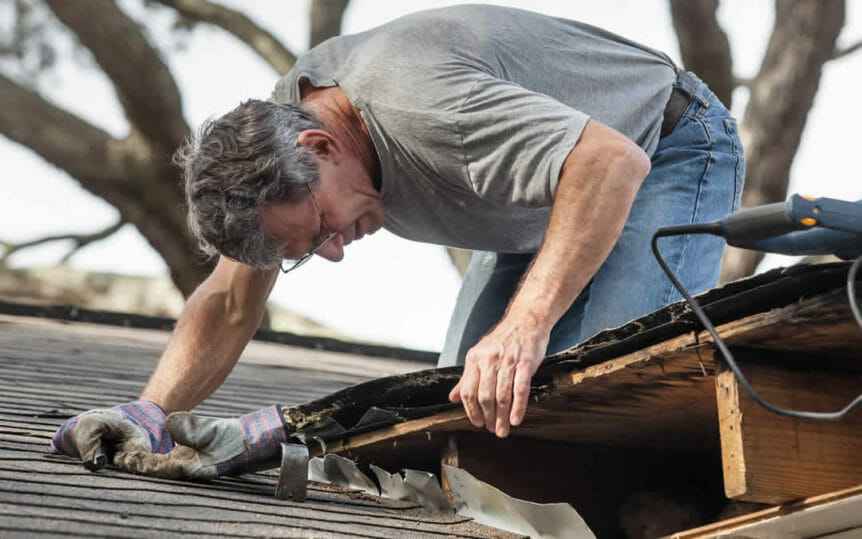
The Best Way to Find a Roof Leak
A leaking roof is one of a homeowner’s worst nightmares. Not only is it a sign that you’re probably in for a costly (and certainly inconvenient) repair process, it may also be the cause of structural problems throughout your home that will compound the longer you let it go.
It’s not just annoying; it’s pretty serious, and it’s also urgent—so it puts you under a lot of pressure. The first thing you need to do, other than trying to stop any incoming water, is find the source of the leak. This will help you determine the extent of your problem, the nature of your problem, and of course, what you have to do next.
Common Causes of Roof Leaks
Roof leaks are surprisingly common. If you own a home for more than a decade without replacing the roof, you’re probably going to experience one. This is partly because there are so many possible points of origin for roof leaks, and surprisingly little overlap between them.
Here are just a few:
- Cracked flashing. Flashing is the name for the long pieces of metal that are usually installed under the shingles as a supportive measure and to prevent water from penetrating your home. Roofers use tar to hold flashing together, and over time, the flashing may crack, which eventually results in a leak. You might be able to simply replace the broken section of flashing and repair the leak.
- Broken shingles. Broken shingles are probably the easiest potential cause of a leak to spot: All you have to do is look at your roof, and the culprit will be evident. High winds and rain can sometimes break shingles loose from the structure, which results in gaps where water has an opportunity to seep in.
- Improper sealing. Not all roofers do a quality job the first time. It’s possible that the tar used to seal your roof fixtures in place was not applied properly, and as a result, the roof was flawed from the point of installation.
- Worn sealing. Even if installed correctly, the sealing may wear over time, thanks to the steady assault of weather activity and the natural degradation of age. Over time, the sealing can crack, and leave gaps through which water can pass.
- Clogged gutters. Your gutters are designed to help draw rainwater away from the roof. But if they’re full of leaves and debris, gutters can’t do their job properly. When water backs up and pools around your roof, that spells trouble over the long term. Though not necessarily the direct cause of a leak, backed-up gutters can contribute to one of the other existing problems by making more water available to pass through a tiny crack, worn sealing, and other gaps.
How to Track Down the Leak
Now that you know some of the reasons your roof might be leaking, take a look at the simple process that can help you determine the location, severity, and nature of a leak:
- Step One: Wait for a rainy day. The easiest time to find a leak is during a spell of heavy rain. If water is visibly coming in, you’ve found your source. However, if you notice potential wet spots but you aren’t sure when the next solidly rainy day is going to be, you can simulate rain with a garden hose (provided you can get some help from a friend).
- Step Two: Head to the highest point of the house. Even if there’s apparent water damage at some lower point of your home, head to the highest point of your home’s interior to scope out the extent of a leak. For most homeowners, this means the attic. Carefully ascend to that level, and search for the source of the liquid intrusion.
- Step Three: Use a flashlight to track the primary source of the leak. A flashlight will help you see water more easily, because the light reflects off its surface. You may already have a suspicion for where the leak is, but confirm your belief and trace any water flow back to its ultimate point of origin. If you’re unable to wait for or simulate rain, try to trace water spots or stains back to their source. Once you’ve identified it, if there’s a hole, you can use a nail or similar marker to locate the spot on the exterior of your roof.
- Step Four: Check for any secondary sources of the leak. If there’s any kind of damage to your roof—whether it’s from wind, heavy rain, or improper installation—there’s a good chance that it isn’t the only point of damage. While you’re investigating, use your flashlight and judgment to scout for other possible sources of leaks and secondary flows of water.
Finding the Leak as Soon As Possible
It’s extremely vital that once you notice a sign of a leak, you track it down and get it repaired as soon as possible. Any incoming water from your roof will enter your home and may cause damage to other parts.
For example, excess water may spur the growth of interior mold, or weaken certain structural elements of your house; it could even cause a short in the electrical system, which creates a fire hazard. The longer you allow your roof leak to continue unabated, the greater risk you’ll pose for the rest of your home.
In some cases, it may be possible to fix the leak on your own. For example, if your roof is composed of asphalt shingles and one has broken, you may be able simply to replace the section in question. Other leaks are more substantial, and may require professional intervention. In the meantime, you can use heavy sheeting or a tarp to block off the leak temporarily until a professional can make it out to your home.
No matter what type of leak you’re looking at, or what the degree of urgency is, John Moore can help. We’ll track down the root cause of your roof leak, analyze what needs to be done, and do it right, so you don’t have to worry about it again.
If your roof is currently leaking, don’t wait; contact us for immediate help.
